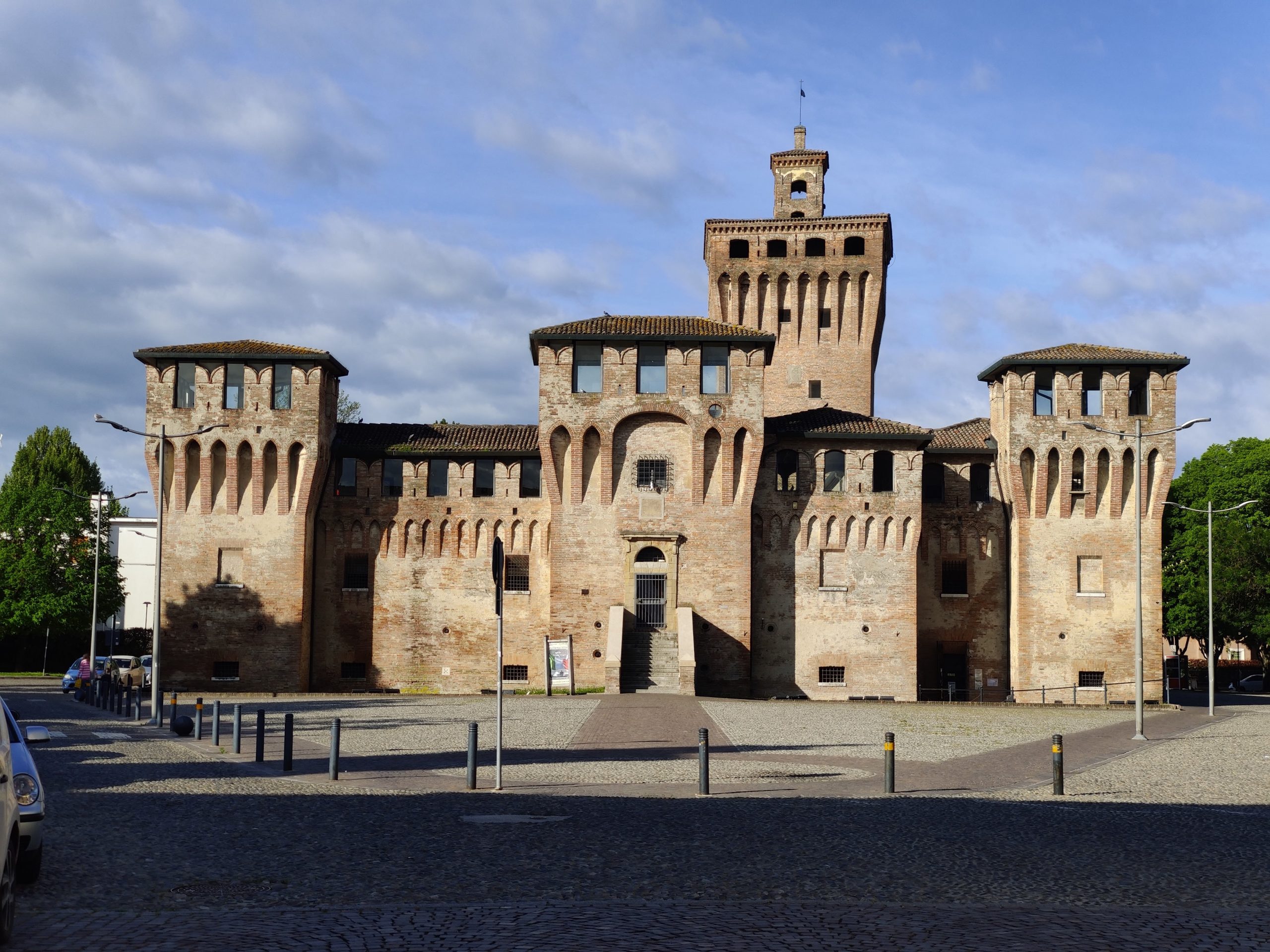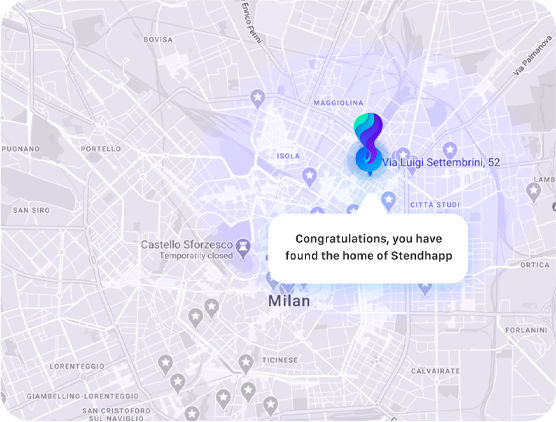Cento is a small capital of art, cuisine, and precious and brilliant conviviality.
Thirty minutes by car from Bologna, forty from Ferrara, fifty from Modena, sixty from Reggio Emilia, Cento mixes at its heart an architectural structure that hints at a centuries-old affiliation with the Diocese of Bologna, while its political-administrative ties and long-standing struggle to tame the waters make it instead relatable to the Ferrara area, to which it now formally belongs. Cento is synonymous with connection, collaboration, invention, and surprise: a city close to the whole of Emilia that, like a moving rope stretched to unite territories and communities, has accustomed its people to inventing a new idea of auteur tightrope walking, represented in the famous Carnival but not only.
Cento as a cultural center since the sixteenth century
It is not a coincidence, then, that from the sixteenth century, in the midst of Humanism, Cento assumed prominence from a cultural point of view thanks to a true balancing act around a language that still, at the time, did not exist: it was in fact in 1543 that Alberto Accarisio, with the help of an itinerant printer, printed at his home the first glossary of the vernacular language, which would be taken up by the Accademia della Crusca in the first vocabulary of the Italian language almost eighty years later, in 1612.
Guercino as seen by Goethe
If Accarisio’s aim was to harmonize the good in language, the work of another illustrious seventeenth-century centese, Giovanni Francesco Barbieri nicknamed “Il Guercino,” moved instead to confirm another characteristic typical of the centese: a vision and design action inspired by sweetly revolutionary characters, intimately probable, devoid of coarseness and arrogance. Consistent with this spirit, Guercino’s works are distinguished by quiet grace and free grandiosity, and by a special something that allows the eye, however untrained, to recognize them at first glance, as Johann Wolfgang von Goethe had to say in his “Italian Journey.” But what also impressed Goethe during his stop in Cento was the extent of the cultivated fields, the offspring of a course of agrarian participation that made it possible to transform the marshes into a collective territory capable of bearing great fruit (it is no coincidence that the rare and delicious crayfish is featured in the city’s coat of arms).
Cento and its cuisine
The ability to turn a limitation into a resource is part of the culture of Cento and is expressed, like a true sentimental recipe book, in much of its gastronomic and agri-food heritage: suffice it to recall the deep-rooted tradition in the production of cured meats (think of the characteristic “salama da sugo” or the record for the longest cotechino in the world), but also the delicious recipes that highlight snails or duck meat. Also worth noting is the mastery linked to the creation of egg pasta kept alive to this day by the legendary sfogline, also capable of skillful reworking of the classic certified tradition within local festivals: not to be missed in this sense is the legendary tortellino of Bolognese lineage (in Reno Centese) and the pumpkin tortellone of Este ancestry (in Bevilacqua).
The Botteghe Storiche
A land of mills and pasta factories, Cento has evolved its offerings over time by enhancing the set of historic stores into a true Natural Commercial Center, a hospitality space designed to welcome and easily orient the visitor, capable of satisfying all kinds of desires and tastes today through a variety of proposals of the highest level.
To appreciate it at its best, the classic walk under the arcades of the center can only start from the Piazza del Guercino, dominated by the Palazzo del Governatore (inside which is housed the modern art gallery dedicated to Aroldo Bonzagni with works by Giacomo Balla and Lucio Fontana) and set almost at the same distance from the two main churches, San Biagio and San Pietro, the latter dating back to the 13th century, home to the Reverenda Fabbrica del Mosaico and embellished with works by Guercino; from here it is then is possible to move toward the Collegiate Basilica of San Biagio Vescovo e Martire, an ancient oratory dating back to the first millennium that can count the bell tower most beloved by the people of Cento for the suavity of the singing of its bells and in whose aisles there are numerous works of art among which the painting “San Carlo Borromeo in prayer,” also by Guercino, stands out.
The Other Caravaggio
As Goethe had to say, “In Cento the name of Guercino is sacred, on the lips of the young as well as the old.” Guercino, who lived most of his life in Cento, follows and embraces us throughout our journey, able to fascinate us with a particular, and entirely unique, idea of forms in space. Considered to be one of the most representative artists of the mature phase of the Baroque, with respect to the construction of figurative space Guercino speaks an absolutely personal word, as if light rained down from the background over bodies, objects, and landscapes, touching accents of extraordinary intensity. A symphony of powerful but never blatant chiaroscuro that, thanks to his progressive mastery of contrast and daring in the use of color, has led him to be called “the Other Caravaggio“: where contrasts of light, which in Caravaggio are a means of emphasizing the plasticity and drama of form, in Guercino belong instead to a pure luministic quest that culminates in a kind of scenic effect, a vocation evident in the painting “St. Joseph and St. Francis” (the famous “Carraccina” found in the Pinacoteca centese).
Guercino, through his intention with respect to light, gives us another indication of how to look at Cento: as a place that sensitively welcomes a plurality of stimuli, forms, and occasions by making them cohabit in harmony.
Cento and the cinema
Cento, surely now it is clearer, is indeed a small capital of art, of cuisine, of precious and brilliant conviviality; but as a good city-acrobat it also gives us in conclusion two other surprises related to cinema: it was in fact the set of the recent documentary on Ferruccio Lamborghini who, in the hamlet of Renazzo, was born and began to produce first his tractors and then his famous cars, while a few years ago it was chosen as the set of the film “Mio fratello rincorre i dinosauri” directed by Stefano Cipani and based on the novel of the same name by Giacomo Mazzariol. Two stories that tell of frontiers crossed with genius, inventiveness, and determination, between miraculous appearances and daring adventures, and of the importance of pursuing one’s dreams, which, lo and behold, just like tightrope walkers, manage to dance through the clouds beyond all boundaries.
photo: M. Fortini





